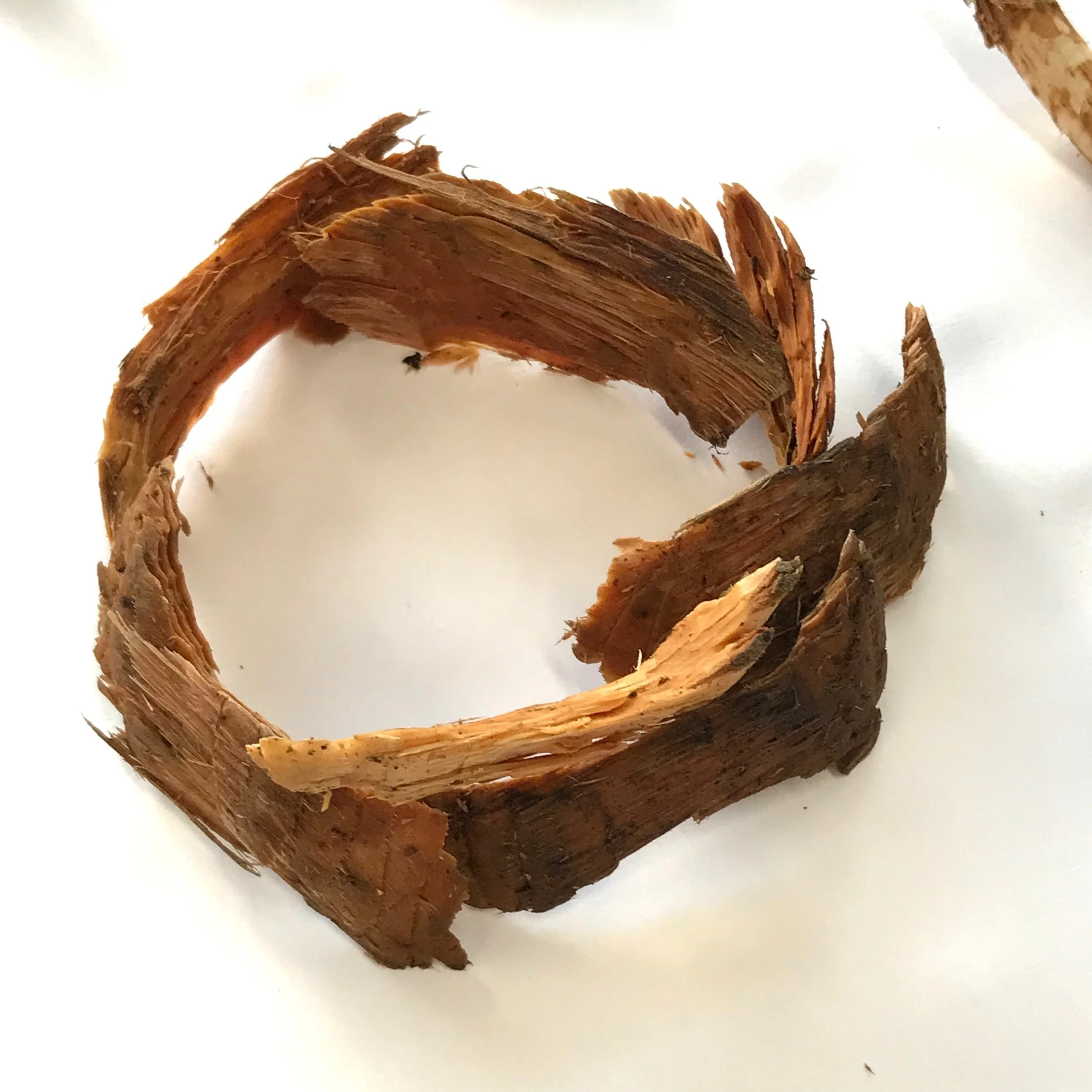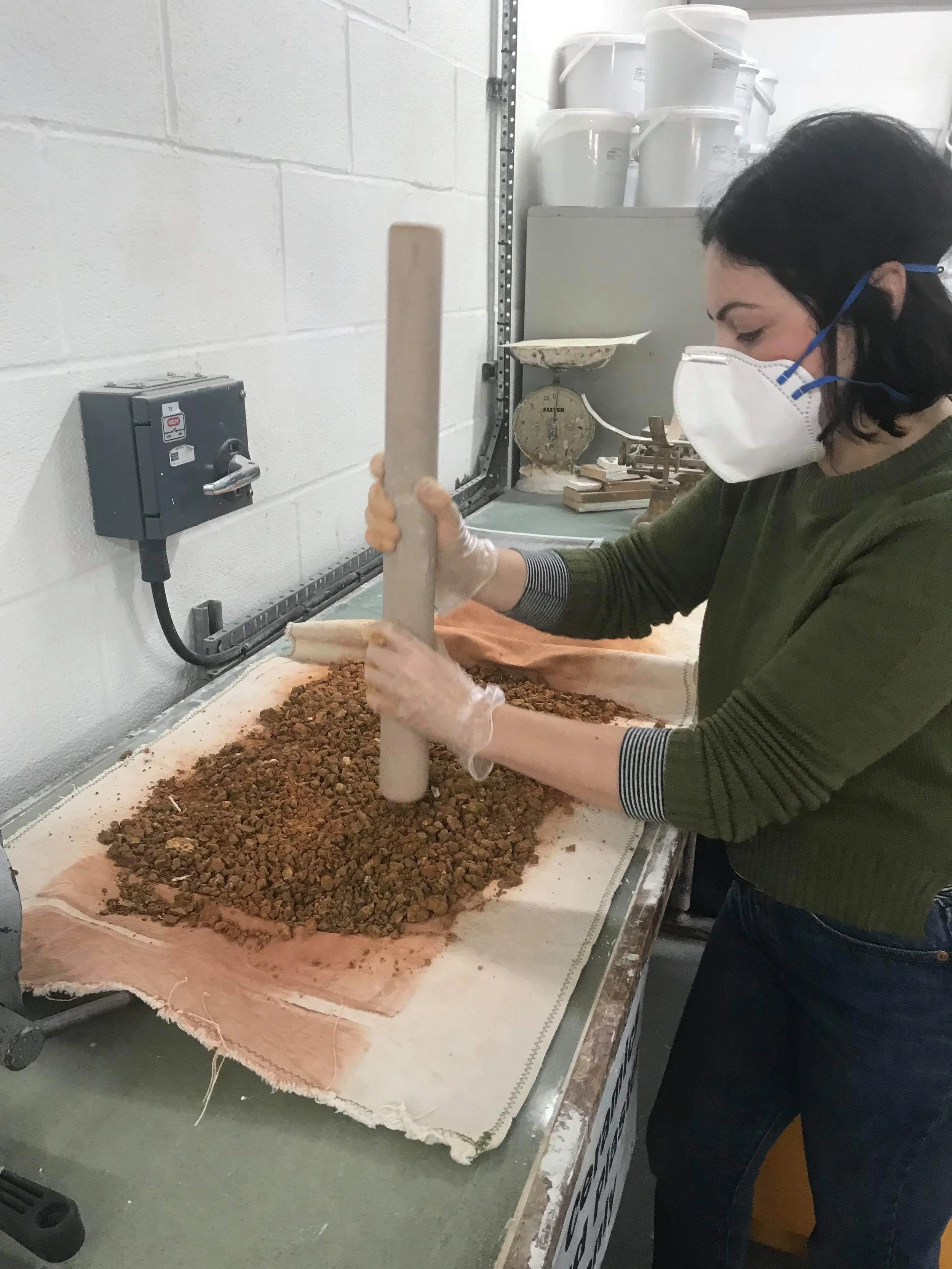Imbricating and Beaver re-wilding in the United Kingdom
This body of work is derived from metaphors for collaboration between humans and more-than human world-making endeavors, specifically beaver keystone species re-introductions in the United Kingdom as solutions to both environmental sustainability issues like flood management and biodiversity, as well as, the potential for how more-than human species can teach us what it is to be human.
Imbrication
Making these forms is a slow process.
In the winter of 2018 I did a mirco-ethnography on beaver re-wilding projects in the United Kingdom which hightlighted the massive impact these species has on landscapes and environments through diverting waterways in the creation of habitat. On how the human experience of world-making could be influenced through the lens of another species. There was a lot of local enthusiam for both natural flood management solution and the species biodiversity potentials from beaver-rewilding, particulary in Devon. I vistied a site in Essex with a hydrologist as my guide and later met a wetland biologist who had been working on a rewilding site which was spearheaded by locals in Devon. Through field-notes, footage and photos I formed the basis for a body of work and my undergraduate thesis. The pieces which stood out the most from this body of work were made with the philosophical underpinning from something the wetland ecologist said over and over when describing the lodges and dams, or the ‘environment’ that the beavers were inhabiting. That they build all of this “one piece at a time.” Which is how I make the imbrication pieces, one clay sliver at a time. A process which is intentional and requires me to move at a pace not often apart of the hecticness of daily life. It is repetative and can become a bit of a ‘counting rice’ meditation.
Imbricating became the process which I continued to develop out of the body of work and I realised during my Masters at the Royal College of Art that it was a process relatable and transferrable toward even broader and deeper contexts. I began to see how it was proficient in describing existence itself and the undulations, rhythms and movement of life and time in expansive capacities. I am still uncovering its potential as a process.
The ‘one piece at a time’ nature of this making process allows me to witness the work culminate slowly. The slow connection of fragments joining together into a form. These fragments form relatable groupings and they have rhythms or a type of animated dynamics in how they relate to each other in both movement and folds within the form. Once the form is fully manifested or complete there is a ‘whole-ness’ to the object. Viewed from a distance the wholeness of the form is dominant as the details of its process are subtle and inconspicous. However, viewed in close proximity the details, subtle from afar, at closer look become the dominate the force of the work. I am quite drawn to notions of paying attention and how vivid the subtle vibrations of a ‘thing’ can become once we slow down and appreciate it’s vitality.








